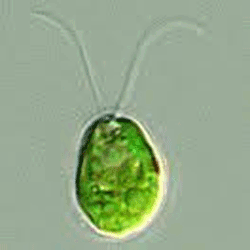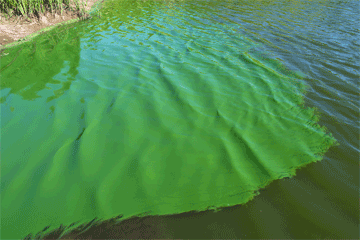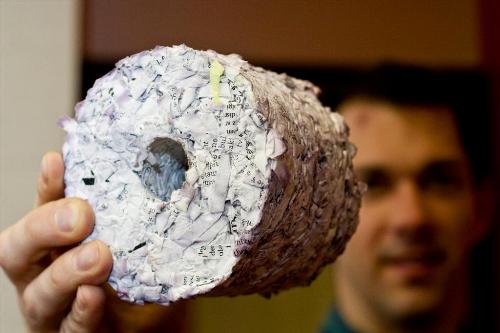This is the story of how a simple algae culture changed the entire world as we know it.
Without algae, human life would not have flourished. Algae, is the building block of human life.
Let me explain.

Introducing Chlamydomonas reinhardtii, or Chlamy for short,
Genes carry the instructions of life “written” on tightly coiled molecules called DNA inside every cell. Chlamy’s genetic “instruction book” has about 15,000 genes, which is about 8,000 fewer genes than in humans. When the biologists compared Chlamy’s genes to other organisms, some interesting trends emerged.
A large number of Chlamy’s genes can also be found in flowering plants. But it might be surprising to know that roughly 35 percent of Chlamy’s genes can be found in both flowering plants and humans, the research team reported earlier this year. Plus, about 10 percent of Chlamy’s genes can be found in human cells but not plant cells.
No one is going to invite Chlamy to the family reunion, of course. And Chlamy isn’t that unusual — many different living things have identical genes. But Chlamy is interesting: It shows how evolution can deliver some surprising tricks, like producing algae cultures that are genetically similar to humans and plants.
Algae Culture and Bacteria move in
About 3 billion years ago, Earth was a different planet. It was not populated by people, animals or plants, and the atmosphere was mostly carbon dioxide. Earth’s inhabitants were microorganisms such as bacteria, so small they’re impossible to see without the help of a microscope.

So how did that Earth become the planet on which we live?
Many scientists who study evolution blame one particular organism called cyanobacteria. (Sometimes known as blue-green algae or blue-green bacteria, these microorganisms were grouped together with algae until just a few years ago.)
“Blue-green bacteria changed the world more than any other group of organisms,” says Brent Mishler, a phycologist at the University of California, Berkeley. Blue-green algae culture were capable of photosynthesis, he says, which means they started taking carbon dioxide and adding oxygen to the atmosphere.
And one time, when this algal ancestor ate one of these blue-green bacteria, something strange happened. The organism didn’t digest the bacteria — it absorbed it.
Instead of becoming dinner, that bacteria became a permanent resident inside the other organism.
Biologists believe that bacteria-inside-an-organism is the oldest ancestor of all green algae. These two organisms each had their own set of genes, but after millions of years and many, many, many generations, the genes mixed and both sets became essential for the alga’s survival. The two organisms had become a single algae culture or organism.

Other types — including brown algae, red algae and diatoms — also evolved in a similar way. “What makes all the algae groups algae is that some of the cyanobacteria went and lived inside them,” Mishler says. “But they were invaded separately.”
This distinction explains why there are so many different kinds of algae — and why the algae family is still hard to pin down. Scientists have shown that many different types of algae are related only distantly, despite the fact that they may look similar.
We, as a species, have literally evolved from an algae culture.
You might also be interested in...

25 Algae Products That Can Make You Rich
Here are 25 examples of entrepreneurs using marketing and imagination to algae products to bring to market.. Read More

New Algae Based Products
The number of products currently on the market containing, or using, algae is staggering. There are currently dozens of products and soon there will be hundreds. Read More

The Most Important Life Form You Never Knew Existed
Algae, is the building block of every other life form, even human life.. Read More
The Algae Revolution Has Begun
David, just read through your book on algal biodiesel. Nice layout, easy to read with emphasis on building from local materials and good optimism. We may use some of these ideas for our engineering senior design course this year on biofuels production. Thanks..
Professor of Biosystems Engineering



